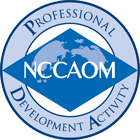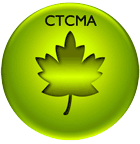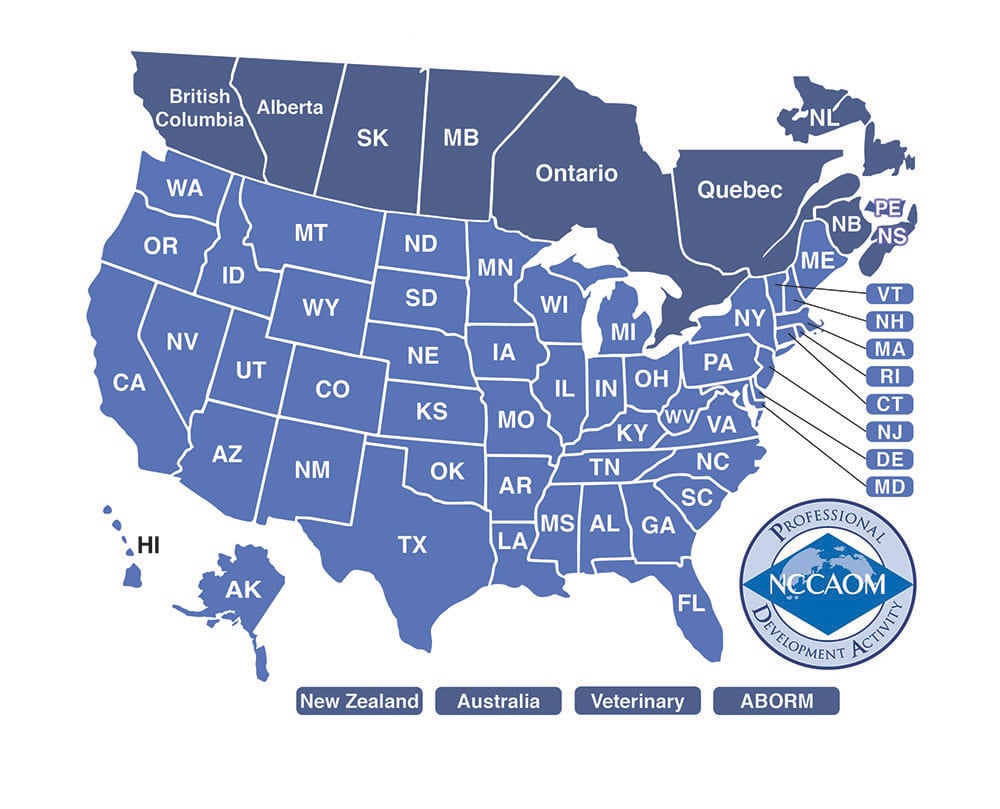Chinese Medicine Pediatrics & Ear Infections
Sample Course Materials
by Colleen DeLaney, L. Ac., M.T.C.M. & John Struthers, L. Ac.
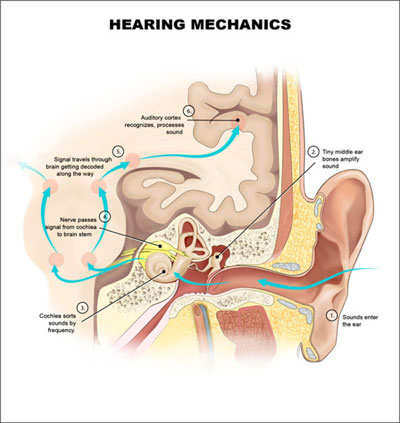
Illustrations are larger in actual course material.
TREATING CHILDREN IS REWARDING
Treating otitis media (also known as middle ear infection) in children is both clinically and personally rewarding. If you have no previous experience treating children with Traditional Chinese Medicine it may at first seem intimidating but obtaining rapid results makes it well worth learning TCM treatment. Children, after all, do not have decades of built-up patterns of disharmony to resolve. While children move through the stages of infection at an accelerated rate compared to adults, they can also respond to gentle treatment with moxa, shoni-shin, acupuncture, and herbs with equal rapidity.
There are differences between children and adults to be kept in mind. The book Acupuncture in the Treatment of Children, 3rd edition, 1999, p3-6, by Julian Scott and Teresa Barlow notes five traditional Chinese sayings that help to delineate the medical distinctions between adults and children:
"Children's Spleen is Often insufficient."
"Children's Yin is Often Insufficient."
"Organs are fragile and soft, Qi easily leaves its path."
"Children easily become ill, and their illnesses quickly become serious."
"Yin and yang organs are clear and spirited. They easily and quickly regain their health."
"Liver often has illness."
"Children's Spleen is Often Insufficient."
Spleen related problems in children are so frequent and basic that supporting and treating the Spleen energy is always a factor in treating chronic and recurrent ear infections, especially when antibiotic use has been prevalent. Spleen deficiency can be addressed with herbs and acupuncture, and even small changes in children's diets can quickly help the Spleen recover.
"Children's Yin is Often Insufficient."
Children are far more yang and active than adults, and so it is very easy for them to quickly develop high fevers as well as a quite rapid onset of acute otitis media Children are also far less susceptible to cold than adults, explaining their joy in cold foods such as ice cream.
"Organs are fragile and soft, Qi easily leaves its path."
This explains that children are far more easily affected by external factors such as wind which can easily progress to otitis in children. They are far more susceptible to viruses than adults and are easily affected by changes in the diet.
"Children easily become ill, and their illnesses quickly become serious."
This explains the rapid rate at which disease can develop and move through stages. Children's viral illnesses can very quickly deepen into secondary infections. However, the good news also follows...
"Yin and yang organs are clear and spirited. They easily and quickly regain their health."
Fortunately, children also respond quickly to all forms of treatment, making our job so very rewarding.
"Liver Often Has Illness"
The two ways in which Liver disharmony leads to ear infections in children is from Liver fire, often caused by intense frustration; and Liver/Gallbladder damp heat, often caused by improper diet and food stagnation.
Pediatrician Cooperation:
The overuse of antibiotics in our culture quickly leads to further Spleen deficiency in children and complicates the simple patterns of illness that children often experience. However, offering a viable alternative to antibiotics is not only gratifying for the parents but also helps to prevent a lifetime of deficiency patterns in the child created by repeated infections and the over-use of antibiotics. Antibiotics are always available as a backup if the initial acute ear infection formula is not sufficient. In our clinical experience, the immune system is enhanced the first time a child is able to break free of a repetitive pattern of common colds that culminate as ear infections (leading to antibiotic use). As a result of Chinese Medicine treatment, the incidence of recurrent ear infections significantly decreases. We have found that pediatricians are generally happy to monitor the progress of treatment regimes if doing so potentially averts antibiotic use or the need for tubes to be surgically inserted in the ears (tympanostomy).
IN THIS COURSE YOU WILL LEARN:
- The etiology, prevalence, and diagnosis of pediatric otitis
- How repeated antibiotic use contributes to the recurrence of otitis media by creating lingering pathogenic factor
- Effects of the diet on mucus production and reduction
- Specific food allergies linked to recurrent ear infections
- The role of probiotics in prevention
- How to create a non-threatening clinical atmosphere for treating children
- Shoni-shin, Moxa, and needling techniques specific to children
- Herbal formulas for treating acute otitis media
- The three-step herbal method for breaking the pattern of recurrent ear infections
- Where to find pre-made tinctures designed for children
- How to make your own powdered formulas for reconstitution by parents
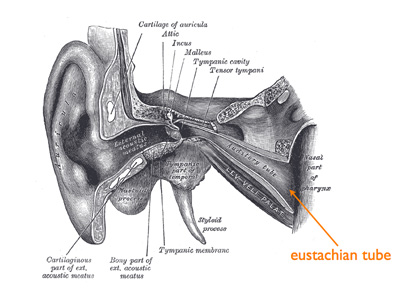
BIOMEDICINE
Otitis media, an infection or inflammation or the middle ear, is the most common cause of earaches and often accompanies respiratory infections such as the common cold or flu. This is because the middle ear is connected to the upper respiratory tract by a tiny channel known as the eustachian tube (auditory tube).
Cells in the middle ear create a fluid that helps to keep out invading organisms. This fluid drains downward through the eustachian tubes. The problem arises when the eustachian tubes become swollen, trapping fluid in the middle ear, thus creating a breeding ground for bacteria. This leads to inflammation and infection.
Children are more susceptible to ear infections than adults because their eustachian tubes are shorter, more horizontal, and therefore more easily blocked. It may be that children are also more susceptible due to motor development issues and that with maturation of the autonomic nervous system the local muscles “learn” to regulate the opening and closing of the eustachian tubes.
Allergic reactions to foods, animal danders, or pollens can also cause the eustachian tubes to swell as can exposure to smoke, fumes, and other environmental toxins. Chronic stuffy noses can also cause fluid from the throat to move into the middle ear.
Ear infections are quite common, and except for well-baby visits, are the most common reason for trips to the pediatrician in the United States. Otitis media affects two out of every three children in the United States by the age of two and is the most common cause of acquired hearing loss in children. According to WebMD, almost half of all antibiotic prescriptions written for children are for otitis media. The cost of treating middle ear infections in the U.S. has been estimated at $2 billion a year. As many frustrated parents know, many children get these earaches repeatedly despite antibiotic use. This recurrent condition does not always cause pain but the build-up of fluid behind the eardrum can impair hearing and lead to permanent hearing damage. Consequently, thousands of children end up with tubes surgically implanted in the middle ear to maintain consistent draining.
COMPLICATIONS AND PROFESSIONAL CONSIDERATIONS
If untreated, otitis media can lead to complications including mastoiditis, eardrum perforation, meningitis, facial nerve paralysis, and possibly Meniere’s disease. In our clinic, we desire neither the responsibility nor the liability of making the primary diagnosis of ear infection because of the potential for serious complications. We do not use a pediatric otoscope because we rely on the pediatrician’s office for monitoring the progress of treatment.
DIAGNOSIS OF EAR INFECTIONS
Most of the children brought to our clinic are stuck in a pattern of recurrent ear infections and the parents are seeking alternative treatment. Frequently, the child has already been diagnosed and is taking antibiotics. In this case, the child should remain on the full course of antibiotic treatment as prescribed by the M.D. . In many cases, parents catch the signs and symptoms early because they have witnessed many ear infections. In this instance, we are able to administer Chinese Medicine treatment immediately.
Symptoms of acute otitis media
Fever, irritability
Ear pain and pulling on the ears
Pain with light tapping around the ears
Red face, cheeks, or ear
Excess crying and difficulty sleeping
Difficulty hearing
Unresponsiveness to quiet sounds
Difficulty maintaining balance
Fluid draining from the ears
Very active or destructive behavior
COMPLIANCE
We urge parents of children with a history of recurrent ear infections to immediately treat every early sign of Wind invasion seriously. Therefore, any early sign of colds, sinusitis, cough, and fever are treated with the aim of Releasing the Surface and preventing the pathogenic factor from penetrating to the Interior. In our most common clinical scenario, the child has already been treated with antibiotics and the parents want to prevent yet another recurrence. This is where Chinese Medicine intervention can be very rewarding.
and
LINGERING PATHOGENIC FACTOR (Echo Pattern)
This is a very common scenario in children that most parents recognize. Lingering Pathogenic Factor is more a state of not being healthy than being in a state of illness. It is characterized by recurrent symptoms that can be traced back to a specific event. A common statement pointing to a likely incidence of Lingering Pathogenic Factor is when a parent states, “He just hasn’t been the same since that first ear infection, but his pediatrician says he’s fine.”
Symptoms of Lingering Pathogenic Factor
Continuing presence of dampness such as runny nose
Continuing presence of knotted phlegm, such as swollen glands
Pale face, dull eyes, cold damp skin, poor spirit
Fatigue or sudden drops in energy, where the child suddenly exhausts and then suddenly picks up again
Appearance of mild earache when the child is fatigued
Appetite: variable or picky
Irritability, crankiness, moodiness
Insomnia - waking every two hours
Diarrhea due to Spleen deficiency
MORE IN ACTUAL COURSE MATERIAL (including acupuncture and herbal medicine).
